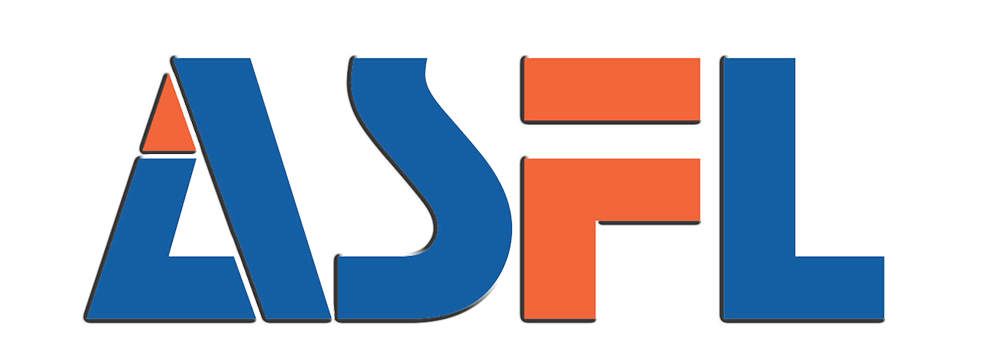How Precision Pressure Control Works in Carbonated Beverage Filling Machines
The Role of Isobaric Filling in Maintaining Product Integrity
The isobaric filling process works by balancing the pressure inside beverage tanks and bottles right before transferring the liquid. Containers get filled with CO₂ at the same level as what's already in the product, usually around 2 to 4 bar. This approach helps prevent turbulence when pouring, which would otherwise cause loss of carbonation. Today's equipment keeps carbonation levels pretty tight, about plus or minus 0.2 volumes. Maintaining these standards matters a lot for keeping flavors consistent across batches and preserving that satisfying fizz consumers expect from their drinks.
Counter-Pressure Filling Techniques to Prevent CO₂ Loss
Counter-pressure filling machines execute a three-stage oxygen purge and pressurization sequence before product release. This approach reduces CO₂ loss by 95% compared to ambient filling methods, as demonstrated in filling process research. Precise valve synchronization ensures pressure remains within 0.1 bar of target levels during the 1.5–3 second filling window.
Real-Time Pressure Feedback for Dynamic Stability
The latest sensor technology monitors pressure changes at intervals as short as 5 milliseconds, which then causes the system to automatically adjust how much gas gets injected. These kinds of closed loop controls help deal with all sorts of real world issues that come up during production runs. For instance, when working with syrupy liquids where viscosity can vary by plus or minus 15%, or when containers experience temperature swings of around 10 degrees Celsius. Keeping things stable within just 0.05 bars makes a big difference for manufacturers who see their annual waste drop by about 18%. Plus they end up hitting those target volumes with incredible precision, getting close to perfect fills 99.8 percent of the time across different products.
Scientific Principles Behind CO₂ Solubility and Foam Formation in Carbonated Drinks
CO₂ Solubility and Pressure Stability During Filling: A Scientific Perspective
The way carbon dioxide dissolves in drinks is governed by something called Henry's Law. Basically, how much CO2 stays dissolved depends a lot on the surrounding pressure and temperature conditions. When filling these beverages, most manufacturers keep the pressure around 2 to 2.5 bars during processing. This helps stop the gas from escaping too quickly while still getting those desired carbonation levels between 5 and 7 grams per liter. These days, modern equipment for carbonated drinks actually has sensors built right in that monitor pressure changes in real time. They can maintain stability within just plus or minus 0.1 bar differences, which makes all the difference when it comes to keeping the final product tasting exactly the same batch after batch.
| Parameter | Optimal Range | Impact on Carbonation |
|---|---|---|
| Temperature | 2°C – 4°C | Maximizes CO₂ solubility |
| Filling Pressure | 2.0 – 2.5 bar | Balances speed and stability |
| CO₂ Concentration | 3.0–4.5 vols | Industry-standard fizz level |
A 2023 beverage engineering study found that deviations beyond ±0.2 volumes of CO₂ increased oxidation risks by 18% and reduced shelf life. Lower temperatures (<4°C) further inhibit microbial growth, aligning hygiene goals with carbonation efficiency.
Causes of Foaming Due to Pressure Fluctuations in Carbonated Beverages
Foam formation occurs when dissolved CO₂ rapidly nucleates due to pressure drops or temperature spikes. For example, a 0.5 bar pressure fluctuation during filling accelerates bubble growth by 22%, wasting product and clogging filler heads. Three factors amplify foaming:
- Surface imperfections in containers (scratches, residue) providing nucleation sites
- Over-carbonation exceeding 4.5 volumes of CO₂
- Warm liquid (>6°C) reducing gas solubility
Automated pressure relief valves now mitigate 95% of foam-related downtime by maintaining isobaric conditions until bottles are sealed, as tested in high-speed bottling lines.
Engineering Solutions for Foam Management and Filling Accuracy
Carbonated Drink Filling and Foaming Prevention: Engineering Solutions
Today's carbonated drink filling equipment uses special laminar flow nozzles along with bottom-up filling methods to cut down on all that pesky turbulence when moving liquids around. Industry research shows these modern systems can slash foam formation by about half compared to older approaches, based on tests looking at how well they keep CO2 inside under pressure. The newer valves designed to fight foaming work by combining counter-pressure filling techniques with cooling the liquid down. This helps maintain CO2 solubility right around 4 degrees Celsius or 39 Fahrenheit, which turns out to be pretty important for keeping drinks properly carbonated. A recent test run in 2023 found that putting all these engineering improvements together actually cut product waste by nearly 30 percent without slowing down production lines below their usual rate of 1,200 bottles per hour.
Liquid Filling Accuracy and Hygiene in Sanitary Back Pressure Regulators
Sanitary back pressure regulators can hit around 0.35% volumetric accuracy thanks to their automated pressure compensation features, which matters a lot for thicker products such as cream sodas or dairy based carbonated beverages. The surfaces on these regulators are polished really smooth (Ra below 0.8 microns) so microbes don't stick to them. They also keep the operating pressure between 2.5 and 3.5 bars needed to stop foaming issues. Looking at what's happening now with modular filling systems, there seems to be about a third better consistency in filling than older pneumatic regulators. This difference becomes even more noticeable when working with sensitive liquids that tend to separate into different phases under stress.
High-Speed Electronic Pressure Controllers for Closed-Loop Systems
Pressure control systems that work in closed loops with IoT enabled proportional valves can tweak filling parameters really fast, around 150 milliseconds response time. They keep CO2 levels stable with just a 0.1 bar difference even when running at top speed. The controllers deliver pretty impressive results too, maintaining about 99.4% accuracy for filling processes across temperature ranges from 5 to 60 degrees Celsius. This matters a lot for production lines that handle different products like cold brewed drinks alongside regular carbonated beverages at room temperature. Looking at actual field data from 22 different sites shows something interesting: facilities using these predictive pressure algorithms experience roughly 41% less downtime related to pressure issues compared to those still relying on old school PID controls. Makes sense since predicting problems before they happen saves time and money in the long run.
Expanding Precision Pressure Control to Viscous and Non-Carbonated Liquids
Adapting Precision Pressure Control for Non-Carbonated, Viscous Formulations
Syrups, creams, and various oil based products need special pressure control systems because they flow differently than regular liquids. When we look at carbonated drinks, keeping those bubbles intact matters most. But for these thick, non carbonated substances, manufacturers actually have to apply about 30 to 50 percent more pressure during filling processes. That means working within ranges between 1.5 and 4.5 bars according to some recent findings from food engineers back in 2023. The latest machines designed for carbonated beverages are starting to include features specifically tailored for handling these thicker materials as well.
- Variable-pressure nozzles with diameters up to 12 mm to prevent clogging
- Piston-driven filling mechanisms that achieve ±0.8% volume accuracy in high-viscosity fluids
- Heated manifolds to reduce viscosity during dispensing for temperature-sensitive products like chocolate sauces
Pressure Fill Systems for Viscous Liquids: Challenges and Innovations
Five primary challenges define viscous liquid filling:
- Shear thinning: Thixotropic fluids (e.g., ketchup) require pressure drop calculations 20–35% below Newtonian liquid models
- Entrapped air removal: Vacuum-assisted filling heads reduce bubbles by 60–80% compared to open-flow systems
- Adhesion control: Non-stick coatings on valves cut product waste by 12–18% in sticky formulations
- Temperature stability: ±1°C thermal control maintains viscosity within 5% of target values
- Cleaning protocols: 3-stage CIP (Clean-in-Place) systems achieve 99.9% hygiene compliance in <15-minute cycles
These innovations enable manufacturers to achieve 98.5% fill accuracy across viscosities ranging from 500 cP (honey) to 15,000 cP (peanut butter) while maintaining throughput speeds up to 300 containers/minute.
Frequently Asked Questions
What are the main advantages of isobaric filling?
Isobaric filling ensures consistent pressure balancing between beverage tanks and bottles, preventing carbonation loss and maintaining product integrity.
How does real-time pressure feedback benefit production?
Real-time pressure feedback helps automatically adjust gas levels in response to pressure changes, reducing waste and providing precise filling accuracy.
Why is closed-loop system pressure control significant?
Closed-loop systems provide fast and accurate pressure adjustments, ensuring high efficiency and reduced downtime in beverage production.
How can pressure control be adapted for non-carbonated liquids?
For non-carbonated viscous formulations, pressure control can be adjusted using specialized mechanisms like variable-pressure nozzles and piston-driven systems.
Table of Contents
- How Precision Pressure Control Works in Carbonated Beverage Filling Machines
- Scientific Principles Behind CO₂ Solubility and Foam Formation in Carbonated Drinks
- Engineering Solutions for Foam Management and Filling Accuracy
- Expanding Precision Pressure Control to Viscous and Non-Carbonated Liquids
- Frequently Asked Questions





